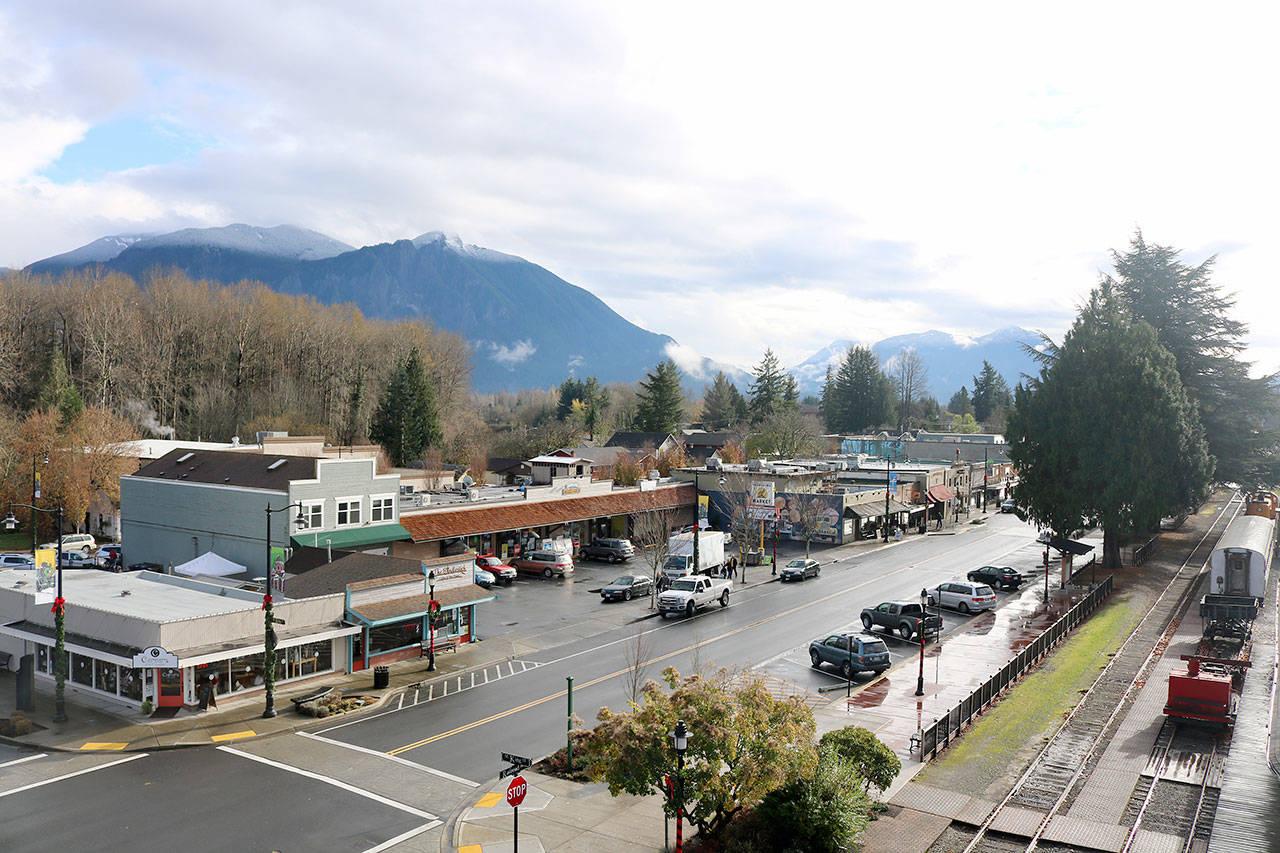The height limit for buildings in the historic downtown district of Snoqualmie has been changed from 30 to 35 feet after a vote by the city council at their Aug. 27 meeting.
After more than two months of meetings on the topic, the council made several changes to the final motion before approving it in a 6-1 vote, with council member Peggy Shepard voting against.
Originally introduced in June, the ordinance came before council partly as a way to clean up two pieces of city code while also potentially making the downtown area more attractive to developers who want to build a business in the area.
In the Historic Overlay Zone, implemented in 2001, buildings were limited to from the previous standard of 35-feet to 30-feet. The Business Retail 1 zoning area that is set within the Historic Overlay Zone sets the height maximum at 35-feet. Similarly, the Business Retail 2 and Business Retail General zoning areas also have a 35-foot height maximum and are also within the Historic Overlay Zone. In the case where the zoning areas overlap the more restrictive limit must be used.
Because of height elevation requirements due to the flood zone, any new buildings would be raised slightly which would cut into the 30-feet of usable space for the building. By changing all the zoning to uniformly agree that 35-feet is the limit, more space would be allowed to developers to work with after taking measures to prevent flooding.
This issue was brought to the city attention as they work towards a sale of the King Street Lot, which sits on the corner of King Street and Railroad Avenue, to Snoqualmie business owners Mike and Ryan Seal who plan to build their new location on that corner. The sale agreement was delayed until the city could make a decision on the height issue as it would impact the type of project they could building.
Several community members gave public comment that night and all were opposed to the raising of the height limit, citing concern over the character of the downtown, the use of Sandy Cove Park, parking, and business.
In council discussion, a two amendments to the ordinance were passed before the final vote. The first fixed typographical errors within the language, the second removed a height exception for flood elevation, which would allow a building height to be raised above 35-feet if the building itself was elevated above the base flood elevation. The ordinance no longer allows that exception, which means all buildings will be capped at 35-feet.
The discussing the main ordinance itself, council member James Mayhew was supportive of the ordinance and commented that the Woodman Lodge, which is also in the downtown area, is over 30-feet and would not be able to be developed today.
The rest of the council also discussed the possible revitalizing impacts raising the limit could have on business and investment in the downtown core. Mayhew reiterated that there have not been any significant renewals of buildings in the area since the 30-foot ordinance was put in place in 2001. He, along with other council members like Sean Sundwall and Bob Jeans, believe that by increasing the limit more investment possibility may be available. They wanted to see it used to further drive business within the city and to help pull even more tourists in to the historic downtown district.
This reasoning has been part of a broader trend to focus on Snoqualmie’s commercial trend going forward. Because the city is so heavily reliant on property taxes, Mayor Matt Larson said, they want to continue to diversify its tax base by promoting more commercial development, to keep and increase money spent in Snoqualmie businesses from both residents and tourists alike.
Council member Bryan Holoway explained his support for the ordinance by stating that there have been buildings in district in the past that have been over 35-feet, and that a 35-foot building, would not have a vast detrimental effect to the character of downtown, especially because any developments must still abide by the city’s historic district design standards.
Council member Shepard was the only no vote stating that she didn’t want to see more development in the area and that people were moving to Snoqualmie to get away from urban centers in the first place. She said she was concerned over too much development making the city feel claustrophobic and the current open space and character of the city was ideal as is.
The next Snoqualmie city council meeting is set for Sept. 10, at 7 p.m. at Snoqualmie City Hall.


